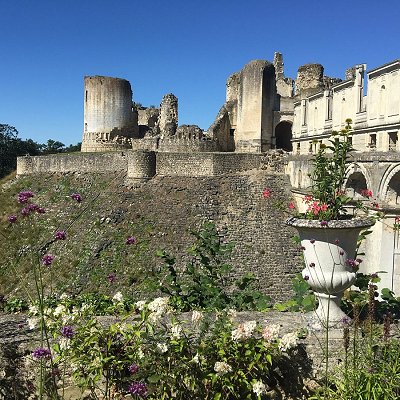
Like us on Facebook
PLACE NAMES



|
|
Fère-en-Tardenois
|

|
|
Fère-en-Tardenois is a commune in the Aisne department in Hauts-de-France in northern France.
It is named for the Tardenois region.
It was the birthplace of Camille Claudel (1864-1943), sculptor and graphic artist.
Sights include:
- The Château de Fère-en-Tardenois dates originally from 1206, with later important Renaissance alterations. Construction of the original castle began in 1206. Little of that remains today. It had seven towers on an enormous artificial motte whose slopes were covered in slabs of sandstone and served as a model for numerous other castles. The connétable Anne de Montmorency, companion of Francis I, transformed the castle in around 1528. In 1555, he enlarged it with the addition of the famous Renaissance bridge carrying a covered gallery. These works were carried out by the architect Jean Bullant (who constructed the gallery at the Château de Chenonceaux) and, possibly, the sculptor Jean Goujon, which would explain the quality of the sculptures, the stone and the colours. Ownership of the castle is shared by the département and a private company. It is open to the public. The Château de Fère-en-Tardenois has been listed since 1862 as a monument historique by the French Ministry of Culture.
- The Oise-Aisne American Cemetery and Memorial is one and a half miles east of Fère-en-Tardenois. It contains the graves of 6,012 American soldiers who died while fighting in this vicinity during World War I including the poet, Joyce Kilmer and, until 1987, Eddie Slovik, a deserter and the first American soldier to be executed for desertion since the American Civil War. The grounds extend to 36.5 acres (14.8 ha) and this is the second of eight large permanent American World War I military cemeteries that are not in the United States. It was initially established on August 2, 1918 by the 42nd Division as a temporary cemetery, but was retained as a permanent cemetery by Congress in 1921. The French government provides the site at no cost for use as a military cemetery. The memorials were designed by Cram and Ferguson and the landscape architect was George Gibbs, Jr. The cemetery is generally rectangular in shape. The chapel, museum and grave plots are one side of the road and a parking area and the service facilities on the other side. The plots are divided by a walkway with a circular island of grass in the middle. The sides of the cemetery include paths, a privet hedge, and a low stone wall.
 Feel free to Email me any additions or corrections Feel free to Email me any additions or corrections
LINKS AVAILABLE TO YOUR SITE
| | |





